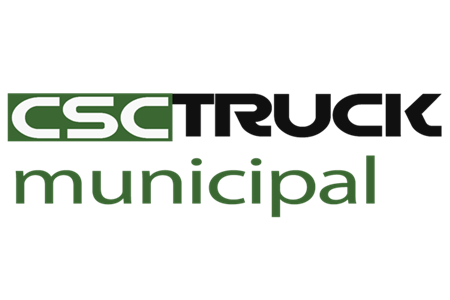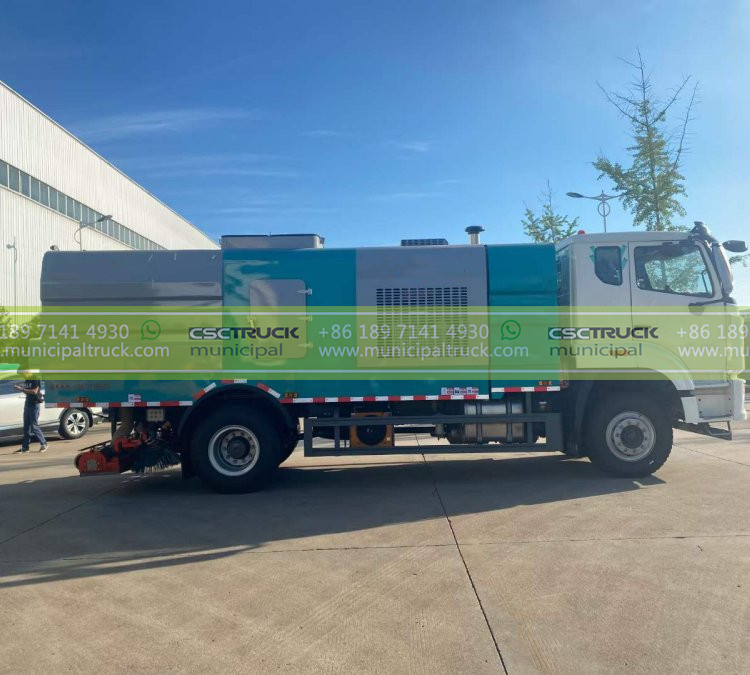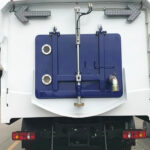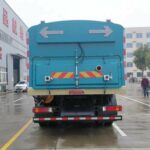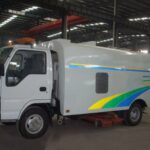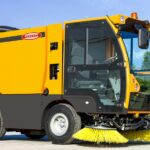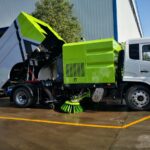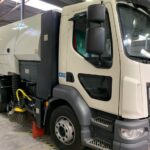Urban cleanliness hinges on precise mechanical intervention. While often used interchangeably, the operational nuances between various sweeper truck types dictate their effectiveness against specific debris challenges. Understanding these distinctions – particularly the strengths of mechanical broom sweepers versus regenerative air sweepers and vacuum sweepers – is critical for municipal managers and contractors aiming for optimal efficiency, cost control, and environmental protection. Deploying the wrong technology wastes resources and leaves persistent problems unaddressed.
The Urban Cleanliness Imperative: Beyond Aesthetics
The role of sweeper trucks transcends mere visual tidiness. They are frontline defenders in a complex battle impacting public health, infrastructure longevity, and ecological balance. Accumulated debris isn’t just unsightly; it’s a multifaceted hazard. Fine particulate matter becomes airborne respirable dust, exacerbating asthma and other respiratory conditions, particularly in vulnerable populations. Heavy materials like sand and gravel act as abrasive grit, accelerating the wear and deterioration of road surfaces and vehicle components. More alarmingly, pollutants like brake dust, tire particles, heavy metals, spilled fuels, and fertilizers bind to street debris. During rainfall, this toxic cocktail is washed untreated into stormwater drains, directly contaminating rivers, lakes, and groundwater – a process known as non-point source pollution. Regulatory frameworks like the Clean Water Act increasingly mandate municipalities to implement robust stormwater management plans, where targeted sweeping is a recognized Best Management Practice (BMP). Choosing the right sweeper technology is thus fundamental to meeting regulatory compliance and protecting community health.
Mechanical Broom Sweepers: Masters of Heavy, Coarse, and Compacted Debris
Characterized by their rotating cylindrical brooms (primary and gutter brooms) and often a conveyor belt system, mechanical sweepers excel where brute force and physical displacement are required. Their design prioritizes the mechanical dislodgement and collection of challenging materials.
- Granular Materials & Construction Residue: These units are unparalleled at removing heavy accumulations of road sand (used for winter traction), aggregate spillage from construction trucks, gravel, and coarse sediment deposited by flooding or runoff. Their robust brooms effectively dig into and lift these dense materials off the pavement surface.
- Post-Event Debris & Bulky Items: Following storms, high winds, or flooding, streets are often littered with tree limbs, fallen leaves (especially when wet and compacted), rocks, broken asphalt chunks, and general large debris. The physical action of the brooms can break apart clumps and efficiently convey these bulky items into the hopper.
- Compacted Materials & Stubborn Buildup: Areas like construction site exits, industrial yards, or neglected urban streets often develop layers of compacted dirt, clay, or mud. The aggressive scrubbing action of mechanical brooms is necessary to fracture this crust and remove the bonded material effectively.
- Limitations: While powerful, they struggle with very fine dust (PM10 and smaller), which often becomes airborne during sweeping (creating fugitive dust). They are also less effective on extremely smooth surfaces like new asphalt or concrete where broom contact is less aggressive, and can be hampered by excessive litter that tangles in the brooms.
Regenerative Air Sweepers: Precision Warriors Against Fine Particulates and Litter
Operating on a sophisticated air circulation principle, regenerative air sweepers utilize a powerful fan to create a high-velocity air stream blasted onto the pavement. This air stream loosens debris, which is then vacuumed up through a pickup head into a debris hopper. Crucially, the air is filtered and recirculated back to the blast nozzles in a closed-loop system (the “regenerative” aspect), minimizing dust emissions.
- Fine Particulate Matter & Dust: This is their definitive strength. Regenerative air systems are exceptionally efficient at capturing silt, fine sand, road dust, brake dust, tire wear particles, and industrial soot. The high-velocity air disrupts and lifts these fines, while the powerful vacuum ensures capture with minimal escape, critically controlling fugitive dust emissions – a major health and compliance concern.
- Urban Litter & Lightweight Debris: Cigarette butts, bottle caps, shredded paper, plastic wrappers, polystyrene foam pieces, and similar lightweight urban litter are effectively vacuumed off pavements, gutters, and around obstacles. The airflow can reach into crevices and around parked car tires where brooms cannot.
- Sensitive Areas & High Air Quality Needs: Their low-dust operation makes them ideal for areas with strict air quality regulations, around hospitals or schools, in dense urban cores, and on surfaces prone to marking or damage by abrasive brooms (newly sealed asphalt, decorative pavers, brickwork).
- Limitations: They are less effective against large, heavy debris like rocks or bricks, deep accumulations of wet leaves or mud (which can clog the system), or densely compacted materials that the air stream alone cannot dislodge. Performance can also diminish on very wet surfaces.
Vacuum Sweepers: Specialized Solutions for Extreme Fines and Confined Spaces
Often sharing similarities with regenerative air systems but emphasizing pure suction power without the recirculating air blast, vacuum sweepers (sometimes pure vacuum or combining vacuum with auxiliary brooms) represent a specialized niche.
- Ultra-Fine Particles & Powdered Materials: Where regenerative air sweepers excel with fine dust, pure vacuum sweepers go further. They are the tool of choice for capturing cement powder, fly ash, foundry sand, sawdust, powdered chemicals, and extremely fine sediment that might escape other systems, crucial in industrial settings, ports, and bulk material handling facilities.
- Liquid Spillage & Damp Debris: While not tanker trucks, industrial-grade vacuum sweepers can handle oily residues, coolant spills, sludge accumulations, and damp materials more effectively than air sweepers or mechanical brooms, preventing these contaminants from washing into storm drains.
- Confined & Sensitive Environments: Their maneuverability and reliance on suction make them ideal for indoor applications (warehouses, factory floors, parking garages), tunnels, airport runways (minimizing FOD – Foreign Object Debris), and areas where extreme dust containment is non-negotiable. They often feature HEPA filtration for hazardous materials.
- Limitations: Similar to regenerative air sweepers, they struggle with large, heavy debris and significant volumes of bulky material. Clogging can be a concern with stringy materials unless robust filtration and debris handling systems are in place.
Strategic Deployment: Integrating Sweepers into the Municipal Fleet Ecosystem
Maximizing the impact of sweeper operations requires recognizing that no single technology is universally superior. The most effective municipal programs employ a strategic fleet mix, deploying the right sweeper truck for the specific debris challenge and location.
- Seasonal & Event-Driven Shifts: Programs might lean heavily on mechanical broom sweepers during spring sand removal campaigns or post-construction cleanups. Regenerative air sweepers become dominant in summer for dust control and year-round in urban cores for litter and fine particulate removal. Vacuum sweepers may be deployed reactively for industrial spills or proactively in sensitive zones.
- Complementary Technologies: Advanced mechanical sweepers increasingly incorporate water spray systems for dust suppression, bridging a gap towards air sweeper performance on dust. Some regenerative air sweepers feature auxiliary gutter brooms for better collection in curbs. Pure vacuum systems might add mechanical agitators for tougher jobs.
- Data-Driven Optimization: Leveraging route optimization software, GPS tracking, and even debris load sensors allows municipalities to match sweeper type to route characteristics (traffic volume, surface type, typical debris load) and schedule operations for maximum efficiency and minimal disruption, ensuring resource efficiency.
- The Holistic Fleet: The sweeper truck is just one vital component within a modern municipal truck fleet. Its debris removal role directly complements other critical vehicles: the rear loader garbage truck efficiently collecting bagged and containerized waste from residential and commercial areas using its powerful compaction system; the street sweeper maintaining clear road surfaces; and specialized trucks like catch basin cleaners or vactor trucks addressing sewer system maintenance. Together, these diverse municipal truck assets form an integrated waste and environmental management network. Understanding the precise debris profile of a given task – whether it’s coarse gravel after a winter storm, pervasive brake dust along a busy highway, fugitive cement powder at a construction site, or litter in a pedestrian plaza – dictates whether the optimal solution is the aggressive scrubbing of a mechanical broom, the dust-minimizing precision of a regenerative air system, or the pure suction power of a vacuum sweeper. This discernment transforms sweeping from a routine chore into a strategic asset for cleaner, healthier, and more sustainable communities.
